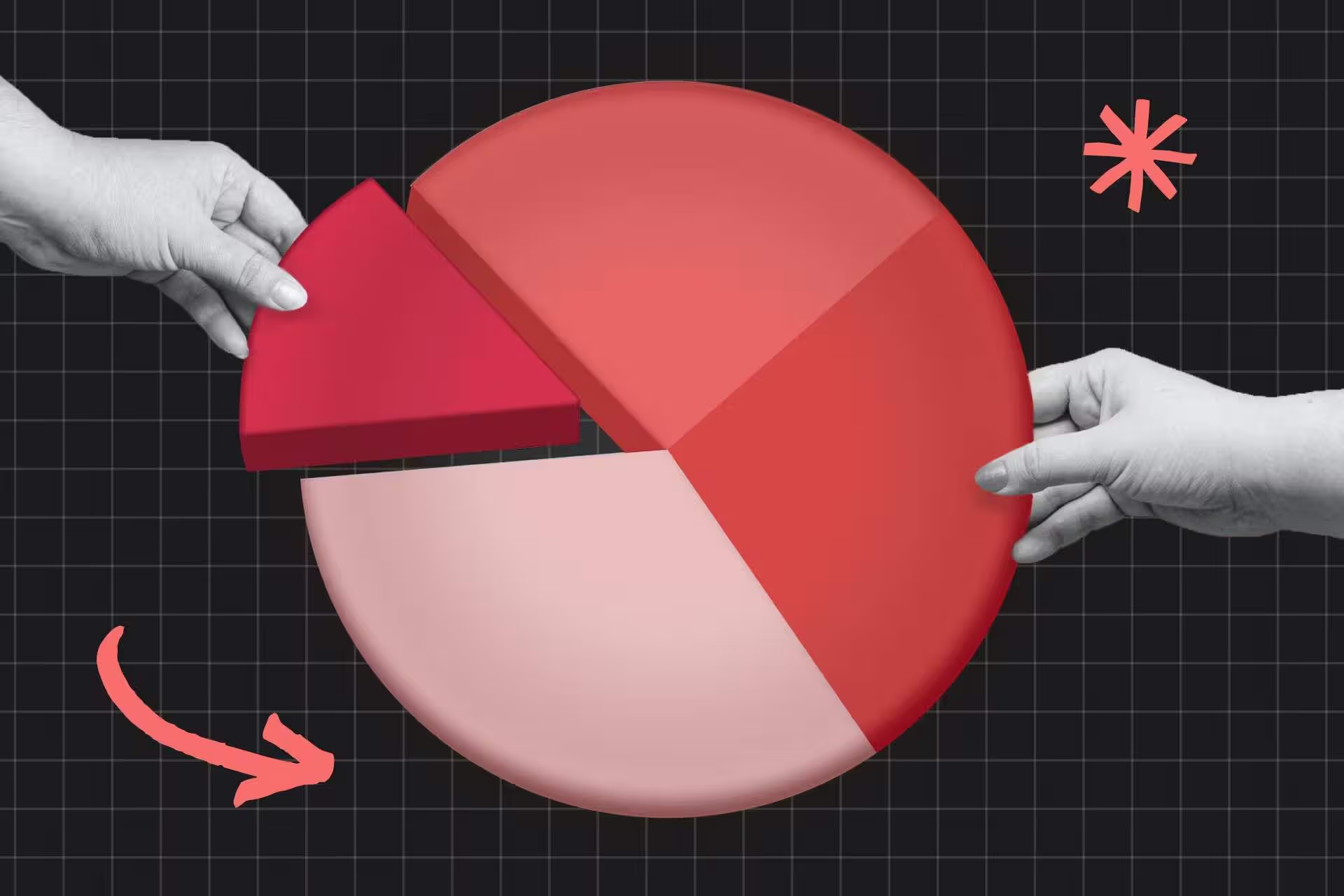“Each generation imagines itself to be more intelligent than the one that went before it, and wiser than the one that comes after it.”
George Orwell always had a way with words, but there’s truth in that quote. Each generation does think differently, so when it comes to presenting your brand and product to them—you need to approach each generation differently.
We call this “generational marketing.”
What is generational marketing?
Marketing is most effective when you segment the community into smaller demographics and target a specific demographic with messaging that matters to them. There are so many different ways that you can create these demographic slices. You might segment them based on gender, and tailor messaging to men in a different way to women. Or, if you’re marketing to a local ethnic community, you may consider using their native language.
Generational marketing is when you create demographic segments based on age, and break them down by generation. In the current market, this largely means the following:
- Baby Boomers (born 1946-1964)
- Gen X (born 1965-1976)
- Millennials (born 1977-1995)
- Zoomers (born 1995 – 2010)
Technically there is also Gen Alpha—those born after 2010. However, the eldest among them is currently 13. Outside of a very small few niches (such as toys), you’re more likely to be marketing to their parents to reach them.
Why is generational marketing important for startups?
Facebook got its start targeting the millennials. TikTok, meanwhile, was a Zoomer toy first and foremost. In many cases, a successful startup gets its initial momentum by correctly identifying the generation that will find its product most compelling. By then tailoring the MVP and initial marketing efforts towards that demographic, they find their first core audience.
The target demographics can (and do) change. Facebook is used by all demographics now—you don’t have two billion users by only appealing to one demographic. However, it’s also often referred to as the Boomer’s social media platform—a far cry from the “hip & young” reputation it once cultivated. Millennials, meanwhile, are embracing TikTok as it pushes up from the youngest generations.
These are natural deviations as a product goes through its lifespan. However, the common thread is always that the founders started with one demographic in mind. They were then able to effectively use generational marketing to find that product-market fit.
Marketing to different generations: A breakdown
Each generation has very different priorities and circumstances, and so needs to be marketed to differently. From the messaging and aesthetics, right through to the platforms you use to reach them, you’ll need to tailor your approach.
Zoomers (Gen Z)
How old are they?
Roughly the ages of 13-28. Yes, if you’re from one of the other age demographics and really feel old, consider that the elders within the Zoomer generation are now starting families of their own.
Who they are
Zoomers are:
- Around half the Zoomers are adults, while the other half are dependants.
- They’re also the first generation that is considered “digital natives.” Zoomers grew up living and breathing technology.
- Those that are in the workforce are just starting their careers and have relatively low purchasing power.
What they care about
Authenticity and integrity mean everything to Zoomers. They do tend to be a frustrated group (after all, they’re bearing the brunt of socio-economic inequality in society), and are therefore highly demanding of brands. They expect brands to have a social conscience, be aware of their impact on the planet, and be a positive voice in LGBTIQA+ and other matters of social justice.
How to market to Zoomers
Social media and video are key to the Zoomer demographic. They expect authentic interactions with brands, and they want to see peers that they relate to (influencers) participating in those brands. Zoomers live busy, dynamic lives, so you’ll want to keep messaging short and to the point, and quick videos are an ideal outlet for that.
In summary
1) Let Zoomers talk directly to Zoomers. Find influencers to be the face of your brand and hire a Zoomer to run your social media.
2) Make the messaging snappy. TikTok’s became the Zoomer’s platform of choice for a reason—bite-sized videos are gold to this demographic.
3) Be progressive. Zoomers are, overall, not a conservative group. Be positive with the social messaging, focus on diversity and be good to the environment.
Millennials (Gen Y)
How old are they?
Millennials range from the ages of 28 to 46.
Who they are
Millennials are:
- People that have been shaped by so many major events, including the 9/11 terror attacks, subsequent wars, and the Great Recession.
- The bulk of the workforce through COVID. Millennials have lived a life of insecurity and global instability.
- The first generation where two-income families have been normalized.
What they care about
Millennials care deeply about the cost of living. Many of them are struggling to find a property to rent, let alone buy, and feel “priced out” of the dream of home ownership. Similarly, they’re seeing the cost of living pressures and are concerned about savings. Most Millennials don’t have a savings plan, and that’s largely because they don’t have enough money to make one.
Like Zoomers, Millennials also care about activism and social issues. They’re a collaborative and politically engaged group of people and are wielding their growing influence in businesses to champion diversity and inclusion.
How to market to Millennials
Traditional advertising is guaranteed to fall flat with Millennials. Only one per cent of the demographic would be swayed by even a compelling advertisement.
Understanding where Millennials go to research and learn about products is critical to marketing to them. Millennials make heavy use of social media, blogs, forums and YouTube when looking for solutions to their problems. A good SEO and multimedia strategy is a must for reaching them. Because advertising is a dud, brands should instead focus on building a voice and having authentic and direct interactions with Millennials. Content marketing has really taken off as a way to reach this audience.
One other important thing to understand about Millennials is that they’re not that concerned with ownership. There is some fascinating psychology at play here, but it seems that the difficulty in purchasing a home has left Millennials in a state where ownership means less to them.
In summary
1) Be honest. Millennials are too wary to fall for marketing tricks and gimmicks.
2) Be experience-driven. Millennials want to have a good time and build memories, rather than own possessions.
3) Content is king. Millennials love content, so make sure you’ve got plenty of it, and it’s both engaging and easy to find.
Gen X
How old are they?
Gen X is an “often forgotten” generation that is between 47 and 58 years of age. They’re typically seniors in their business and the older ones are actively preparing for retirement.
Who they are
Gen X are:
- The first generation to enter the workforce after politicians such as Ronald Reagan and Margaret Thatcher moved the world to neoliberalism.
- The first generation to have exposure to computers.
- The “Latchkey Generation.” While single-income families were still common, many Gen X kids were the first to grow up with both parents working. With minimal childcare infrastructure back then, this generation grew up to be independent and resourceful from, literally, being left alone after school.
What they care about
Gen X is very concerned about work-life balance, and, with retirement age looming, are preparing themselves for the next stage in their lives. They tend to be socially liberal, though can be financially conservative and are interested in things that can save them time and money.
How to market to Gen X
One interesting quirk about this generation is that they’re now starting to feel nostalgic for their youth. Research suggests that as many as 75% of this demographic is using YouTube to watch videos related to past people and events. Aesthetically and thematically, pressing a nostalgic message through marketing will resonate with them.
Gen X is also deeply concerned about financial security. The younger ones are still actively raising families while the older ones are preparing for retirement. They’re not going to want to take financial risks, so marketing that promotes peace of mind is welcomed.
Finally, omnichannel marketing is essential to Gen X. They remember a time of printed materials and often still enjoy the tactile feel of paper. They also enjoy person-to-person social interactions and spend less time on social media. To reach them, you need a broader marketing strategy.
In summary
1) Tap into nostalgia. Gen X will love it when you remind them of their youth.
2) Be honest and forthright. Gen X needs to trust you before they’ll give you their business.
3) Don’t rely exclusively on digital media. Gen X likes to get away from the screens sometimes.
Baby Boomers
How old are they?
Boomers range in age from 59 to 77. There are still some of the previous generation—the Silent Generation—alive and active, however, as far as being active participants in workplaces and the social environment, the Boomers are now considered to be that eldest generation.
Who they are
Boomers are:
- The first generation after the end of World War 2, where improved economic and living conditions resulted in a population explosion.
- A wealthy demographic thanks to retained wealth from the boom period.
- Either retired and still active, or working in senior positions.
What they care about
Boomers went through some huge cultural shifts during their time, including the Cold War, the sexual revolution, the Vietnam War and the rise of consumerism. These events, combined with the disproportionate wealth they hold, make Boomers the more conservative of the four major age demographics in our society.
Boomers tend to care about the role of families in their lives and society, and are naturally concerned about their health in their twilight years. Many of them continue to pursue the sense of accomplishment that they got from working through the greatest boom economy in human history.
How to market to Boomers
Boomers are the least likely to be swayed by technology and gimmicks. That’s not to say they aren’t tech-savvy. They needed to learn to use computers along with everyone else—but they still appreciate more traditional forms of marketing too.
They also tend to have a longer sales cycle. Boomers like to inform themselves before making purchases. Where a snappy message and photo might work for a Zoomer, a Boomer will want to read articles from respected sources.
Finally, avoid referencing their ages. Boomers still tend to be active and engaged people. While they can be nostalgic for their youth, marketing that involves them in current events and the world tends to engage them more.
In summary
1) Boomers are active: Avoid thinking of them as senior citizens, because they don’t.
2) Boomers are conservative: A lot of messaging that appeals to Millennials and Zoomers will be confronting to Boomers.
3) Boomers love information: This is the only demographic where you can err on the side of giving them a lot to read.
Successful examples of generational marketing
Boomers: Boomers love a good coupon deal. A well-placed and targeted EDM can make all the difference. Here’s a simple example of Kellogg’s offering a $5 gas gift card with purchases of cereal. Because you could accumulate multiple gift cards, and petrol is a cost of living concern for Boomers, this was a successful marketing campaign.

Gen X: Gen X love loyalty rewards, as they are a loyal demographic to their favorite brands. Frequent flier programs are also very successful. For many years the likes of American Express, Mastercard and Visa have been very successful with Gen X with these programs.

Millennials: There is no better example of successful marketing to Millennials than Netflix. By allowing Millennials to connect their Netflix account to their social media and share opinions on the films that they were watching, the company drove a massive, deep, and modern “word of mouth” campaign across the entire demographic.

Zoomers: One great example of a company using social media to create a viral movement among Zoomers is AXE’s #PraiseUp campaign. The campaign featured a simple, 10-second video clip, encouraging Zoomers to pass a compliment to someone else. It also prominently featured ethnic diversity and rejected traditional gender roles—subjects that Gen Z consider critically important.
By making it something of a game and encouraging people to share their content online, AXE drove deep participation. More importantly, they successfully created a strong, positive message among the target demographic.

Effective marketing doesn’t need to be expensive for startups
By leveraging digital platforms well, and understanding the target demographic, it is possible for a startup to be enormously successful without needing a big budget. Understanding that Boomers are on different platforms to Millennials, and Zoomers interact with media differently to Gen Xers is the key. With the right MVP, and the compelling marketing strategy behind it, you’ll be able to win over your first group of superfans.












